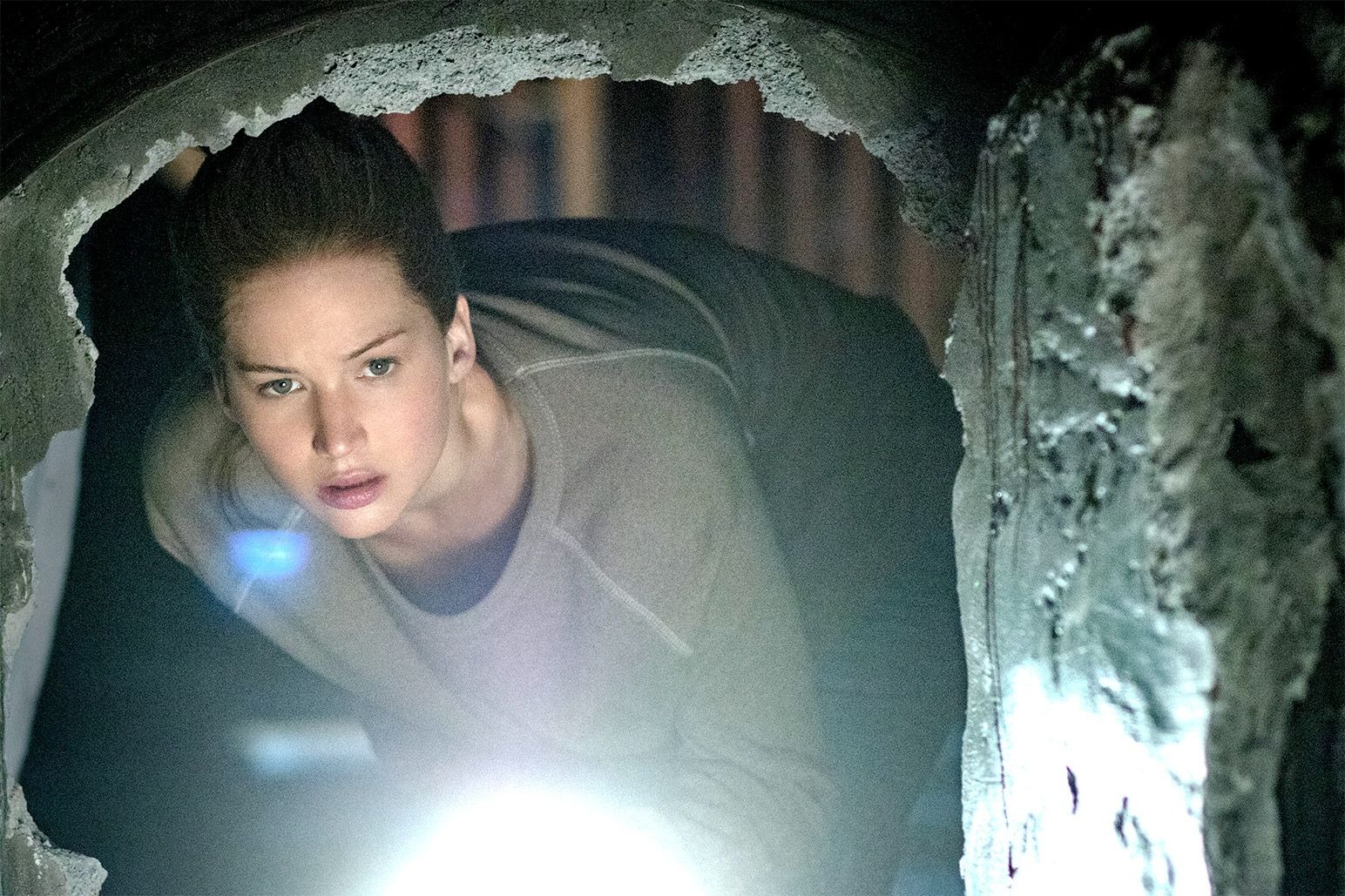The story of mother! begins with a scene that instantly sets the tone of the film, with a woman perishing in flames in a house. In a strange turn, Javier Bardem’s character, simply called “Him,” places a crystal on a stand, restoring the house.
Jennifer Lawrence’s character, referred to as “mother” (lowercase, like all the other characters except Him), wakes up and searches for Him. Right from the start, the film doesn’t waste time telling the audience what kind of experience they’re in for.

From the symbolic names, it is evident that Bardem’s Him represents God, the almighty creator of the world, while Lawrence’s mother embodies Mother Nature.
The meaning behind these characters will become clearer as the film progresses, but in these opening moments, we are given all the essential information that sets the story in motion. He is the creator, and Mother is the nurturer, taking care of Him and the world.
These roles will be challenged as the story develops, with the couple’s relationship playing out in unexpected ways.
Mankind’s Role
The inclusion of mankind plays a crucial part in the film’s deeper meaning. It starts when a man, simply called “man,” is invited to stay in the house, much to mother’s discomfort. Soon, his arrival is followed by a woman and two brothers who fight violently.
The man and woman destroy the crystal that He forbade them to touch, and one of the brothers ends up killing the other in a brutal act with a doorknob. The man and woman are clear representations of Adam and Eve, while the brothers symbolize Cain and Abel, with their destructive tendencies ruining the once peaceful home.
This damage causes the house to bleed from random spots, which only the mother notices. As we approach the third act, the role of mankind intensifies. He, who had been struggling with writer’s block, eventually publishes a poem that brings a flood of strangers to the house.
These strangers obsess over Him’s work and pledge their loyalty to him. What follows is a series of escalating events, from wrecking the house to police raids and even warfare.
These strangers symbolize mankind’s loyalty to God and the chaos that comes with blind devotion to faith, resulting in violence, war, and destruction. The worst part, however, is the disregard for the world they inhabit.
God vs. Nature
Despite Him and Mother having a bond, their relationship faces serious strain as events spiral out of control. Mother’s main aim is to preserve the house and show kindness to those who reside in it. However, people take advantage of her and her resources, causing the house to deteriorate.
This is symbolized by a beating heart in the walls that withers as the abuse worsens. Meanwhile, He overlooks the destructive nature of the people because they remain loyal to him. The tension between them culminates in one of the film’s most gut-wrenching moments.
As the madness escalates, the mother gives birth to their child, a moment the couple had initially been excited about. But now, with the crowd of obsessed strangers outside, the situation becomes tense. He hopes to show the child to the crowd, but the mother refuses to let the baby go.
After falling asleep, the other wakes up to find Him handing the baby over to the crowd, allowing them to handle the child recklessly. The rough treatment results in the baby’s death, and the mother is forced to watch as the crowd devours the baby’s body.
While this scene carries strong religious allegories, such as the Eucharist and the body of Christ, it also represents a low point in the relationship between Him and Mother. Though they remain loyal to their roles, they now find themselves at odds.
Mother wants to protect her creation, but He is focused on offering a savior to his followers, regardless of the cost.
The Cycle Continues
Reflecting on the film’s beginning becomes essential as we approach the ending, making sense of the film’s cyclical nature. He begs his mother to forgive the intruders, but it’s too late. Mother goes to the basement and ignites an oil tanker, destroying the house and everyone inside.

She is left severely burned, but He remains untouched. He comforts her briefly before asking if he can receive her “love.” When she agrees, he reaches into her chest and pulls out her heart, which turns out to be the same crystal from the start of the film.
He places the crystal back into its stand, restoring the house and giving birth to a new mother. Like a forest regenerating after a fire, Mother will rise from the ashes and repeat the cycle. However, this rebirth leaves us questioning whether history will repeat itself.
Every new age of human existence brings its form of destruction and mistreatment of the world, marking the beginning of its demise. He, being the creator who sets the cycle in motion, has the power to change the course. But will he alter his approach, or will everything restart once more?
Based on the recurring motif of the burning woman and mother’s death, it seems that the cycle has already been played out before, and perhaps it’s their fate to endlessly repeat this tragedy.



